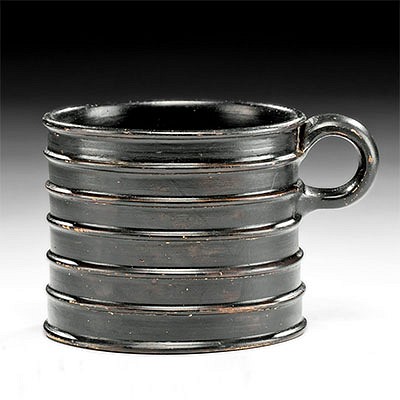Late 19th C. Yoruba Iron Udamalore w/ Socketing Shaft
Lot 110b
About Seller
Artemis Gallery
686 S Taylor Ave, Ste 106
Louisville, CO 80027
United States
Selling antiquities, ancient and ethnographic art online since 1993, Artemis Gallery specializes in Classical Antiquities (Egyptian, Greek, Roman, Near Eastern), Asian, Pre-Columbian, African / Tribal / Oceanographic art. Our extensive inventory includes pottery, stone, metal, wood, glass and textil...Read more
Categories
Estimate:
$500 - $750
Absentee vs Live bid
Two ways to bid:
- Leave a max absentee bid and the platform will bid on your behalf up to your maximum bid during the live auction.
- Bid live during the auction and your bids will be submitted real-time to the auctioneer.
Bid Increments
| Price | Bid Increment |
|---|---|
| $0 | $25 |
| $300 | $50 |
| $1,000 | $100 |
| $2,000 | $250 |
| $5,000 | $500 |
| $10,000 | $1,000 |
| $20,000 | $2,500 |
| $50,000 | $5,000 |
| $100,000 | $10,000 |
| $200,000 | $20,000 |
About Auction
By Artemis Gallery
Mar 12, 2020
Set Reminder
2020-03-12 10:00:00
2020-03-12 10:00:00
America/New_York
Bidsquare
Bidsquare : Ancient / Ethnographic Around The World
https://www.bidsquare.com/auctions/artemis-gallery/ancient-ethnographic-around-the-world-4957
Ancient art from Egypt, Greece, Italy and the Near East, as well as Asian, Fossils, Pre-Columbian, Native American, African / Tribal / Oceanic, Spanish Colonial, Russian Icons, Fine art, much more! Artemis Gallery info@artemisgallery.com
Ancient art from Egypt, Greece, Italy and the Near East, as well as Asian, Fossils, Pre-Columbian, Native American, African / Tribal / Oceanic, Spanish Colonial, Russian Icons, Fine art, much more! Artemis Gallery info@artemisgallery.com
- Lot Description
West Africa, Nigeria, Yoruba culture, ca. late 19th to early 20th century CE. A forged-iron ceremonial prestige sword known as an udamalore (literally "sword of the well-born) with an unusual socketing shaft attached to the tang via coiled iron wire. The tall blade has a notable tip that curves away from the thick spine, and the sharpened blade edge begins roughly twenty percent down the interior curve. The shoulder of the blade is wrapped with an iron band and adorning the top of the socketing shaft is a barrel-shaped brass ornament with a corded center band. Hammered motifs on one side of the blade base were thought to imbue the chiefs with magical power when using udamalore to strike the earth and greet Ogun, the god of iron. Wealthy men also wear these swords during festivals as a symbol of their prestige. Size: 1.4" W x 25.1" H (3.6 cm x 63.8 cm); 28.125" H (71.4 cm) on included custom stand.
For an interesting example of an udamalore carved from ivory, please see The Metropolitan Museum of Art, accession number 1991.17.122.
Provenance: private Glendale, Arizona, USA collection, collected from 1970 to 2000
All items legal to buy/sell under U.S. Statute covering cultural patrimony Code 2600, CHAPTER 14, and are guaranteed to be as described or your money back.
A Certificate of Authenticity will accompany all winning bids.
We ship worldwide and handle all shipping in-house for your convenience.
#152444Minor nicks and abrasions to socketing shaft, iron wire on midsection, shoulder, and blade, with softening to details on blade base and brass ornament, light encrustations, and slight bending to overall form. Light earthen deposits and nice patina throughout.Condition
- Shipping Info
-
All shipping is handled in-house for your convenience. Your invoice from Artemis Gallery will include shipping calculation instructions. If in doubt, please inquire BEFORE bidding for estimated shipping costs for individual items.
-
- Buyer's Premium



 EUR
EUR CAD
CAD AUD
AUD GBP
GBP MXN
MXN HKD
HKD CNY
CNY MYR
MYR SEK
SEK SGD
SGD CHF
CHF THB
THB














